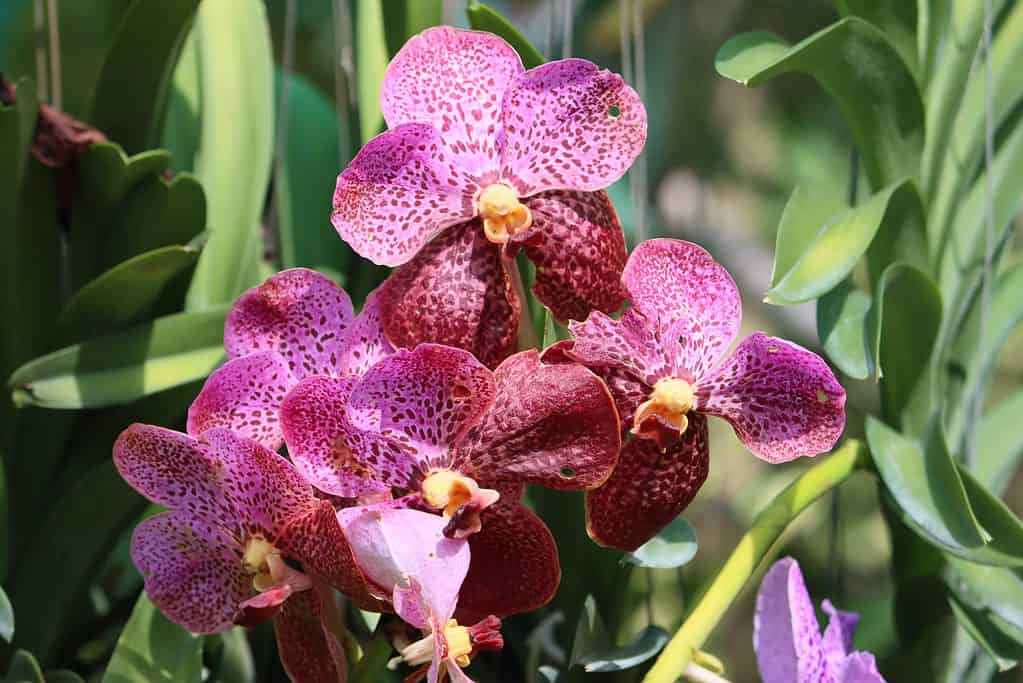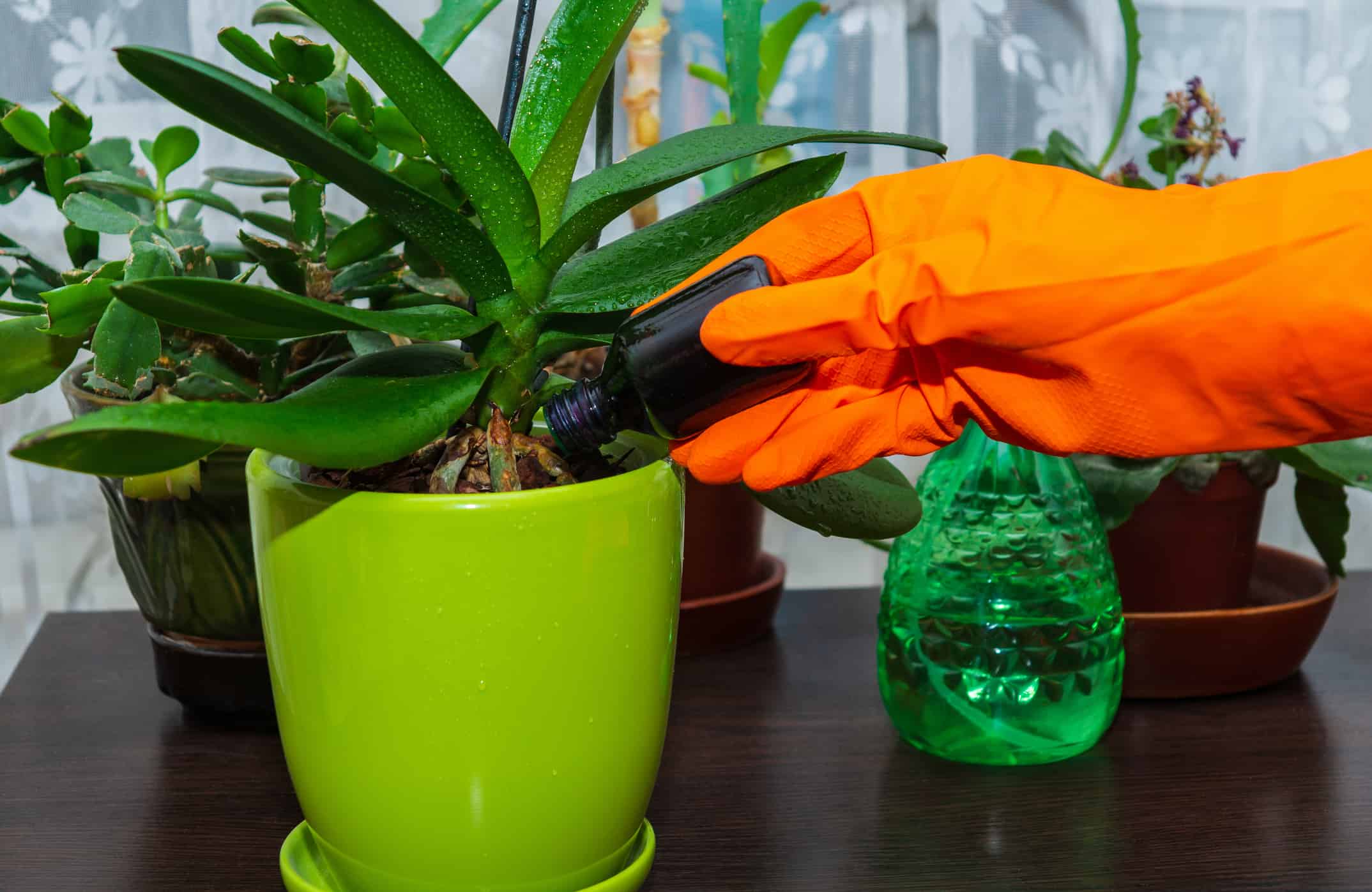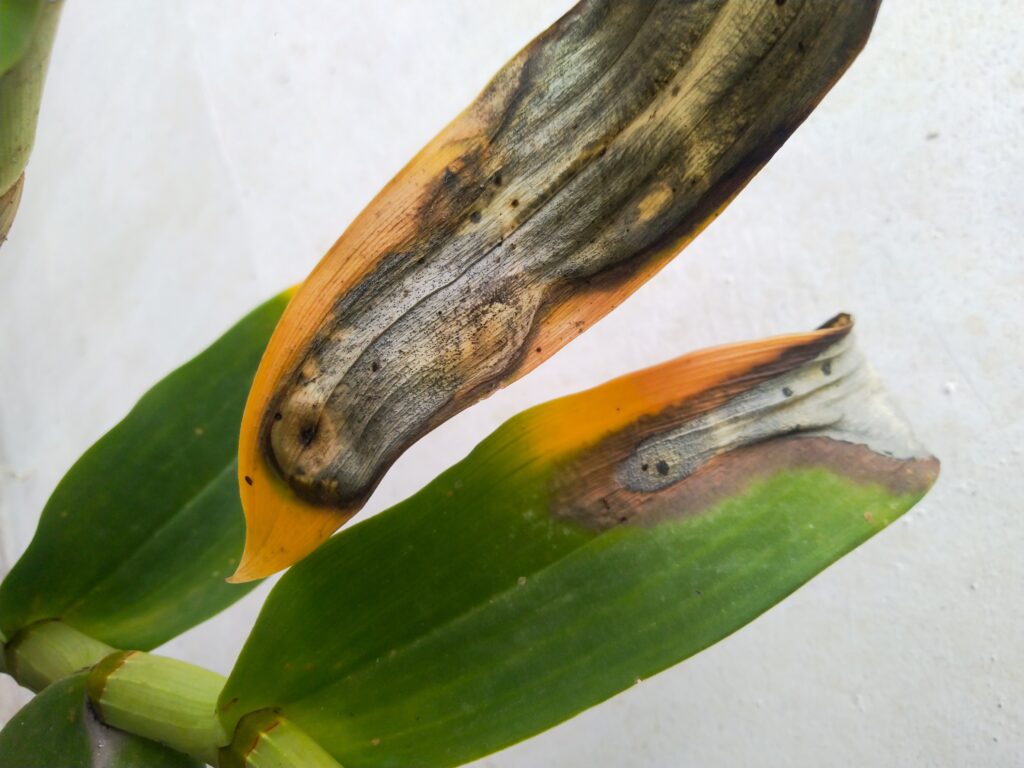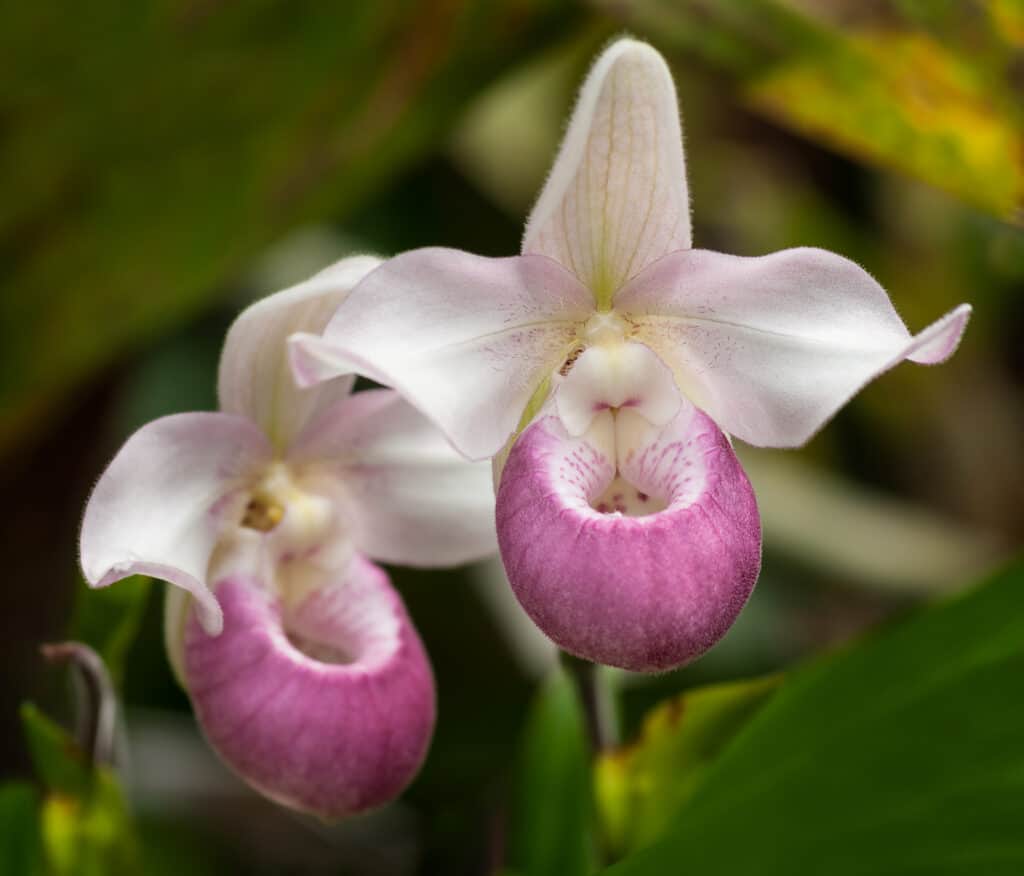Dealing with orchid growing issues? While beginner-friendly orchid species certainly exist, many well-loved orchids do have a reputation for being finicky and difficult to grow. If you’re dealing with a wilting orchid and other growing issues, you’re not alone.
In this guide, we’ll cover the most common problems gardeners face when growing orchids, and how to get your plant back on track to thriving and producing gorgeous blooms.
So, without further ado, let’s get to it!
Orchids: Botanical Classification
Representing 10% of all flowering plant species on Earth, the Orchidaceae family currently contains 28,000 species and 880 genera. It is the most diverse family of flowering plants, with orchids emerging almost 120 million years ago in the tropics of Asia, and now natively growing on every continent except Antarctica. These wonderful, unique plants have evolved to inhabit several environmental niches, growing in the soil (terrestrial), clinging to rocks (lithophyte), and attaching non-parasitically to the bark of trees (epiphyte).
What Do Orchids Need to Thrive?
To understand what orchids need to thrive under cultivation, it’s crucial to be familiar with their native growing environments. Since they grow in vastly different habitats, care requirements vary with general guidelines broadly organized by whether the orchid is a terrestrial or non-terrestrial species, and if it grows in temperate or tropical/subtropical environments.
While they began as terrestrial plants, through evolution, the majority of orchids today are epiphytes that live in subtropical and tropical forested regions. These plants receive filtered sunlight, uptake water from rainfall and air humidity, and receive nutrients from the air, organic matter in bark and moss, and from mutually beneficial plant-fungi (mycorrhizal) nutrient exchanges. Lithophytic orchids grow in much of the same way as their epiphytic relatives, and some species inhabit both niches.
Terrestrial orchids grow in both forested and more open areas, and they’re typically much more tolerant of a wide range of temperatures since their roots are more protected in the soil. They require well-drained, aerated, and fertile soil. Terrestrial species make up less than 20% of all orchids and are often found growing in temperate and subtropical environments. Depending on where they grow, they can receive nearly full-sun conditions or require low-light, filtered sun. Some species enter dormancy in the winter and require cold exposure to trigger spring growth.
Below, we’ll cover wilting and other common issues gardeners face when growing tropical and temperate species.

To understand what orchids need to thrive under cultivation, it’s crucial to be familiar with their native growing environments.
©Kolinchev Andrii/Shutterstock.com
Common Problems Encountered with Tropical, Epiphytic Orchids
Several issues can arise when cultivating tropical orchids, with the fundamental problem often arising from a lack of understanding of how to care for epiphytic plants. When proper care isn’t followed, you may see the following orchid growing issues:
- wilting
- lack of blooming
- burnt or reddening leaves
- darkening leaves
Orchid Growing Issues: Wilting
Wilting can be a sign of a few different issues with your orchid, but one of the most common causes of wilting for epiphytic orchids is overwatering. Watering tropical, epiphytic plants can take some practice as they’re growing habits are distinct from what gardeners are typically familiar with. While all orchids do not tolerate soggy roots, epiphytic orchids in particular are highly susceptible to root rot. In nature, these plants grow with their roots exposed to the air, and while they receive water often during the rainy season, their roots are able to breathe and dry quickly between rainfall. They don’t completely dry out due to the high humidity of these areas, but they avoid becoming soggy thanks to their access to consistent moving air.
If you’re noticing wilting, it’s quite possible that you’re overwatering your epiphytic plant, and not allowing the roots time to dry and breathe. The general rule of thumb for epiphytes is to water about once a week during their growing phase, with possible daily misting depending on your humidity level. This amount of watering allows the growing substrate and roots to stay moist but not soggy.
Additionally, many tropical orchids experience a dry season as is typical of tropical regions that have wet summers and dry winters. It’s important to cut back watering for most tropical and subtropical orchids during late fall-winter. It’s especially easy to overwater during this time as the plant is not actively growing and the roots uptake much less water. If you notice wilting during the winter, make sure you’re allowing the growing substrate to dry out between watering.

One of the most common causes of wilting for epiphytic orchids is overwatering.
©Kororirori/Shutterstock.com
Orchid Growing Issues: Lack of Blooming
Epiphytic orchids rely on frequent, low-dose feedings that mimic how they obtain nutrients in their natural environment. If your tropical orchid isn’t blooming, it’s quite possible that you need to provide more fertilizer. Feeding “weakly weekly” is a common recommendation for epiphytes during their growing season. A balanced, water-soluble orchid fertilizer applied during weekly watering should help your plant produce stunning blooms.
You may also need to repot your plant into fresh, fertile substrate. Since indoor substrate doesn’t usually contain a thriving microbial community, the nutrients in the substrate can quickly become depleted. Repotting or remounting on bark with fresh growing media can help keep your plant healthy and strong. How often you change out the substrate depends on the species.

If your tropical orchid isn’t blooming, it’s quite possible that you need to provide more fertilizer.
©iStock.com/VITALII BORKOVSKYI
Burnt or Reddening Leaves
Because they typically grow under the canopy of dense forests, tropical orchids tend to require indirect sunlight that ranges from low to bright, indirect lighting. Some genera of tropical epiphytes, such as cattleyas, do well with limited full, gentle sun exposure in the morning. But overall, it’s best to avoid full sun exposure. If you’re growing too close to a window (typically one foot away or less), you may notice signs that your plant is struggling with too high of light intensity.
Some plants may experience reddening leaf tips from too much sun, and all typically suffer from burnt sections of leaves. The red color is due to the increased production of anthocyanin triggered by the too-high light intensity. If you notice either of these signs, you’ll need to choose a location where your plant gets less sun intensity. This may mean moving from a south-facing to an east-facing window or moving your plant back a couple of feet from the window.

It’s best to avoid full sun exposure with your orchids to avoid burnt sections of leaves.
©Afra Asy-Syifa/Shutterstock.com
Orchid Growing Issues: Darkening Leaves
On the flip side, if you notice darkening leaves on your orchid, this is a sign that your plant isn’t receiving enough sunlight. The leaves darken as the plant produces more chlorophyll to compensate for the light deficiency. If you notice this sign you’ll need to move your plant to a location with more sunlight or longer hours of light exposure.
Common Problems Associated with Temperate Orchids
Temperate orchids share the same orchid growing issues mentioned above that tropical orchids can experience if their care needs are not met. Follow the guidelines above to help solve these problems with your temperate orchids. Below, we’ll cover one more issue commonly experienced by temperate orchids that is typically distinct from tropical orchids: a lack of new or abundant growth after winter.
Lack of New Growth After Winter
Temperate orchids typically require a dormant period in which they experience a marked drop in temperatures to trigger spring growth. Temperate orchids are typically terrestrial, so their root systems are insulated in the soil and with layers of leaf debris from freezing temperatures. If you grow your temperate orchid indoors, you’ll generally want to place it outside for a certain period of time during the late fall and winter to ensure it receives enough cold exposure. How long you’ll need to leave your plant outside and what temperature range you’re aiming for will depend on the species.
If you’re not noticing new growth in the spring from your temperate orchid, it’s highly possible that you need to ensure an increased duration or colder temperature exposure. You may be able to still achieve this if it’s early enough in the spring and your climate is still experiencing cold temperatures. If not, you’ll know in the future how to solve this problem. If you feel that you’ve exposed your temperate orchid to enough cold weather, try boosting your fertilizing schedule as this may help encourage new growth.

Indoor temperate orchids typically need some outdoor cold exposure during the late fall and winter.
©iStock.com/hkuchera
The photo featured at the top of this post is © iStock.com/Maryviolet
Thank you for reading! Have some feedback for us? Contact the AZ Animals editorial team.







